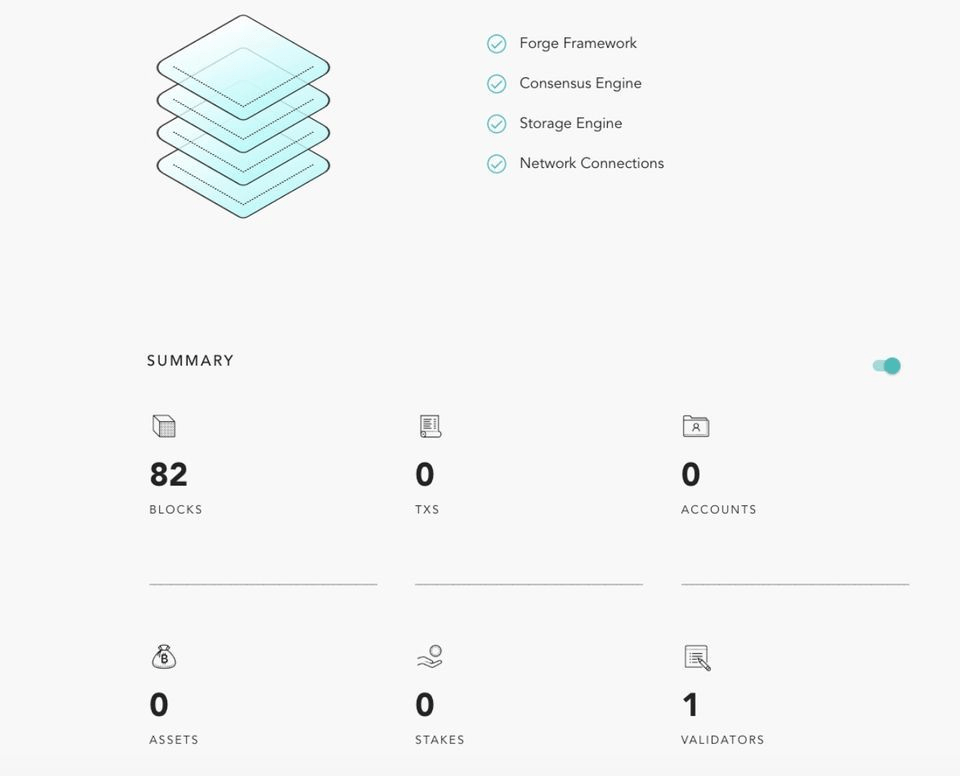5 Things Every Developer Should Know About ABT Blockchain Nodes
2019-05-12
Author: Riley Shu (ArcBlock Data Engineer)
What role does ABT Blockchain Node play in the ArcBlock ecosystem?
The ABT Network is an inter-connected blockchain Network of many ABT powered blockchains, and each ABT blockchain is formed by multiple ABT blockchain nodes. Just like how every Bitcoin node stores the entire history of the whole Bitcoin chain, each node serves as a storage for the activities that have taken place on this chain. With a fully-synced node, a developer has access to all the chain data. ABT nodes are a key part of the ArcBlock platform and to help developers successfully build blockchains and decentralized applications. In reviewing the example below, you can see ABT Nodes connect to the Forge SDK and help developers bring their apps to the ABT Network.
What are the main components of an ABT Blockchain Node?
After launching your ABT Blockchain Node, you will see that the sidebar includes several primary components: The Dashboard, Node Management, and Developer tools.
- The Dashboard: is the summary of information about the chain data stored on this node, as well as the health status of this node including the current state of the node, storage, consensus and more.
-
Node Management:
- Block Explorer: a convenient tool to view all transactions happening on your chain, and new blocks being generated. You can always view the ABT Network status as well we https://explorer.abtnetwork.io for information about the entire network.
- Connected peers: other nodes connected to your chain node. Since ABT Blockchains Node is just a member in the ABT chain, it needs to sync data from other chain nodes. This connected peer map shows the location of the nodes that are currently being synced.
- Developer Tools: This area allows developers to easily debug your application, as well as simulate transactions, test and run different decentralized identity (DID) scenarios and a place to make GraphQL requests to query data. More info about Graphql is here.
How to use the Dashboard?
Anytime you log in to your ABT Blockchain Node, the “dashboard view” is the default view showing you the current status of your node. There are several important details shown to you that you should be aware of:
- Node health status: An interactive diagram where you can see the real-time health status of the different layers of your ABT Node Node info summary: summary of all the data in this node
- Transactions: a time-series diagram of all the transactions on your node
- Top accounts: information about top accounts on this node, sorted by their account balance
- Top validators: information about top validators on this chain.
How to explore your chain data?
Every ABT Blockchain Node stores the data of the entire chain, including all transactions and accounts. Access to this information gives you a complete picture of what activities have been happening on the chain. To answer questions like: who transferred that money to my account, which account is the most active one on this chain, etc, all you need is an ABT Blockchain Node.
There are two primary ways to explore your chain data - block explorer and developer tools - that can support different use cases and give you different options on how to access and use the data being presented to you.
Block Explorer:
-
Pros:
- Convenient and easy to use
- Easy to understand, doesn’t require extra knowledge
- similar to traditional search engine
-
Cons:
- Less flexibility
- Only search for account/tx etc
Developer tools:
-
Pros:
- Very flexible to query anything you want and define the response you want to get
- More control over the request and response
-
Cons:
- Requires extra GraphQL knowledge to use and understand
How to start your own ABT Chain Node?
Currently, there are two options to launch your own ABT blockchain node or to join an existing ABT chain.
-
ABT Chain Node Desktop version - you can easily download or launch an ABT Chain Node using from different ArcBlock cloud partners here - https://www.arcblock.io/en/node/
- Straightforward and easy to use
- Doesn’t support windows
-
Install Forge CLI on your computer (if you are not a developer, or familiar with command line this option is not for you)
- Have more flexibility in terms of editing specific configurations, using Forge SDK to interact with the console and sending direct gRPC requests
- Requires more developer skills to setup
If you want to learn more about the ABT Blockchain Node, Forge SDK or how to build a blockchain please visit our “Getting Started” documentation




